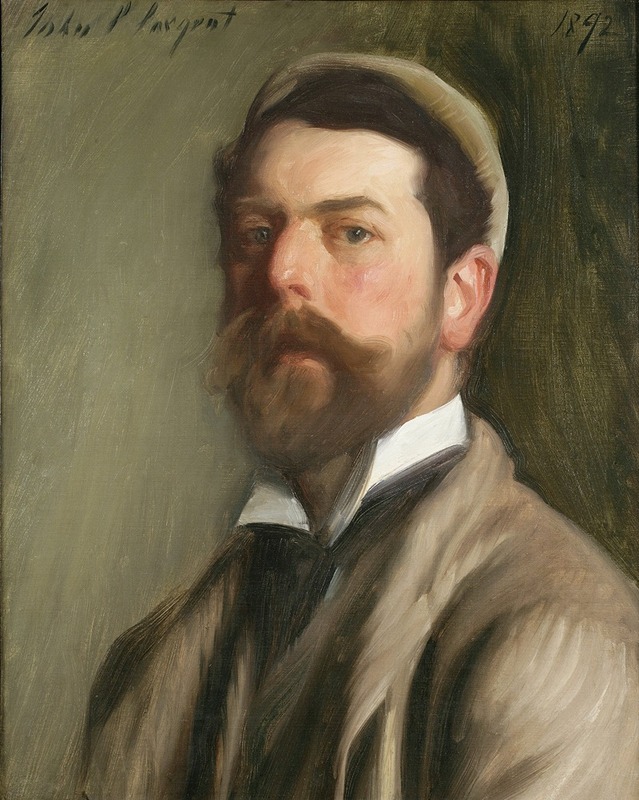
Self-portrait
A hand-painted replica of John Singer Sargent’s masterpiece Self-portrait, meticulously crafted by professional artists to capture the true essence of the original. Each piece is created with museum-quality canvas and rare mineral pigments, carefully painted by experienced artists with delicate brushstrokes and rich, layered colors to perfectly recreate the texture of the original artwork. Unlike machine-printed reproductions, this hand-painted version brings the painting to life, infused with the artist’s emotions and skill in every stroke. Whether for personal collection or home decoration, it instantly elevates the artistic atmosphere of any space.
John Singer Sargent, an American expatriate artist, is renowned for his portraits, which capture the essence of his subjects with remarkable skill and insight. Among his extensive body of work, Sargent created several self-portraits throughout his career, each offering a glimpse into his evolving self-perception and artistic style. One of the most notable self-portraits by Sargent is housed in the Uffizi Gallery in Florence, Italy, a testament to his international acclaim and the high regard in which he was held by his contemporaries.
Sargent's self-portraits are characterized by their technical proficiency and the subtlety with which he portrays himself. Unlike many of his commissioned works, which often feature elaborate settings and detailed backgrounds, his self-portraits tend to focus more on the face and expression, providing a more intimate and personal view of the artist. This approach allows viewers to engage directly with Sargent's persona, unmediated by the trappings of wealth and status that often accompany his commissioned portraits.
The self-portrait in the Uffizi, painted in 1906, is a striking example of Sargent's mature style. In this work, he presents himself with a direct gaze, capturing a moment of introspection. The painting is executed with his characteristic fluid brushwork, which conveys both the texture of his skin and the depth of his expression. The background is kept minimal, ensuring that the viewer's attention remains focused on Sargent's face. This self-portrait reflects his mastery of light and shadow, techniques he employed to great effect in his portraits of others.
Sargent's decision to create self-portraits was not merely an exercise in vanity; rather, it was a way for him to explore his identity as an artist. Throughout his career, Sargent was known for his ability to adapt his style to suit the needs of his subjects, whether capturing the opulence of high society or the ruggedness of a landscape. In his self-portraits, however, he had the freedom to depict himself as he saw fit, without the constraints of patron expectations.
The Uffizi self-portrait is part of a long tradition of artists creating self-representations, a practice that dates back to the Renaissance. By including his work in the Uffizi's prestigious collection, Sargent aligned himself with the great masters of the past, such as Rembrandt and Velázquez, who also used self-portraiture to explore their artistic identities.
Sargent's self-portraits, while fewer in number compared to his commissioned works, are significant for their introspective quality and the insight they provide into his character. They reveal an artist who was not only concerned with the external likeness of his subjects but also deeply engaged with the inner workings of his own mind. Through these works, Sargent invites viewers to consider the complexities of identity and the role of the artist in society.
In summary, John Singer Sargent's self-portraits, particularly the one housed in the Uffizi Gallery, offer a unique perspective on the artist's life and work. They stand as a testament to his technical skill and his ability to convey the subtleties of human expression. These works continue to be celebrated for their contribution to the genre of portraiture and their enduring appeal to audiences worldwide.


















